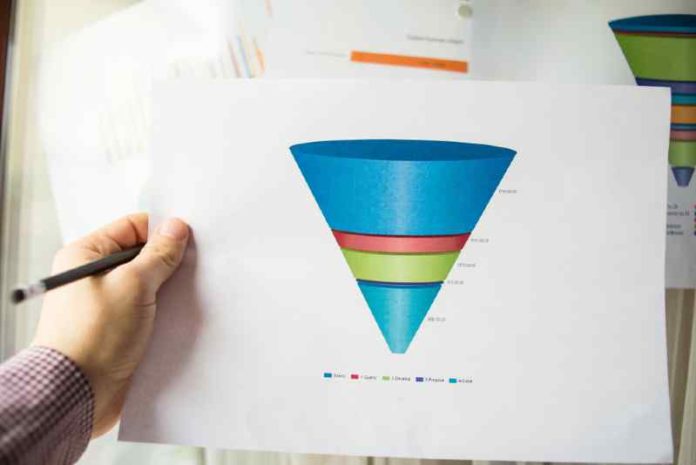If you don’t know what you are going to sell tomorrow, how can you decide what to buy today? Having the tools to help you create the best possible sales forecast, results in optimal purchasing and planning. The primary reason for a demand forecast for any business with inventory is to enable you to make the best possible ordering decision.
Many businesses say that they don’t forecast. They may believe that they are not forecasting, but any of the following is essentially a forecast:
- Using the average of the last x months sales
- Manually calculating min/max levels
- Using gut feel to decide what to buy
There are numerous tools available to help you to create the best possible forecast without having to review every single item.
So how do you get the most accurate demand forecast?
Our experience has shown that a robust, structured forecasting process is critical. The benefits of improved forecasts can be seen when there is a reduction of slow-moving and obsolete stock, as well as a reduction in stock-outs. A healthier, more balanced inventory results in significant savings – but that is a blog for another day!
What does such a forecast process look like?
Typically there are monthly and weekly activities, so let’s start with what should be done monthly.
At the beginning of each month, the system forecast should be reviewed to ensure that it is reasonable and that all known information is included in the forecast. The steps to achieving this include:
1—Let a forecast engine do the grunt work and create computer-generated forecasts for all items:
- Using sales or demand history to generate a forecast.
- Picking up on trends, seasonality, intermittent demand, one-off sales spikes and factoring in data such as lost sales.
2—Any forecast engine worth its salt will generate forecasts using several different algorithms and then compare all of those generated forecasts with the sales/demand history to determine the “best fit” forecast. This results in great forecasts for the bulk of your items.
3—A small percentage of items will need manual intervention, as no forecast engine will get every forecast right. Monitor those items with consistent variances between sales and forecast:
- Adjust the forecast up where sales have consistently exceeded the forecast.
- Adjust the forecast down where sales have consistently been lower than the forecast.
By aligning sales and forecast more closely, there is much less risk of generating excess inventory or experiencing costly stock-outs.
4—Adjust forecasts for new or lost customers, as soon as you are aware of the change. Use the computer forecast but:
- Subtract a lost customer’s monthly demand from the computer forecast.
- Add in a new customer’s expected monthly demand to the computer forecast.
5—New items will have no sales, so new items should be manually forecast for the first few months. However, check to make sure that the “new” item is not:
- A replacement for a “like” product, where a cheaper or better quality product has been sourced and will now be sold instead of the old product. Linking the “new” item to the “old” item in a supersession chain will result in the sales history of the old item being used to generate the forecast for the new item.
6—Adjust forecasts to include additional promotional demand on top of the expected normal sales.
7—Report on forecasting performance and make sure your measure also distills the bias between over and under forecasting. It would also be useful to measure the difference between the system generated forecast versus the manually adjusted forecast to establish whether the manual intervention improved the result.
8—Finally, do a sanity check at a macro level. After making changes to individual item forecasts on an exception basis, review overall sales to forecast to ensure that the overall growth is not too extreme or too conservative. Most forecasting applications will enable macro forecast adjustments to be made, should they be required.
Once the monthly forecast review and endorsement has been completed, the focus switches to a weekly review aimed at highlighting exceptions. Here any severe deviations between sales and forecasts highlight potential issues with the forecast on individual items. Reviewing these alerts enables a prompt response to potential changes in demand.
9—Review forecasts for the top 5-10 sales versus forecast exceptions:
- Where you are selling more than the forecast, consider increasing the forecast.
- Where you are selling less than the forecast, consider reducing the forecast.
- Be mindful that you may be selling less due to stock-outs.
Adjust the forecast as soon as you see a trend emerging before it results in stock-outs or excess inventory.
A reminder: Why do we want the best possible demand forecast?
The forecast is vitally important because it is your best guess as to your future sales expectations and is used to determine the optimal inventory levels that drive replenishment.
Additionally, the forecast is used to establish whether the item is stocked-out, potentially going to stock out, is in excess or if you have too much on order. Without an accurate prediction of what you are likely to sell, none of these predictions would be possible, believable or actionable.
The more appropriate the forecast, the more accurate your purchasing and planning will be—and the better shape your inventory will be in.
Andy Hiscox is the CEO Australia, NETSTOCK
Sales forecast stock photo by Empirephotostock/Shutterstock







